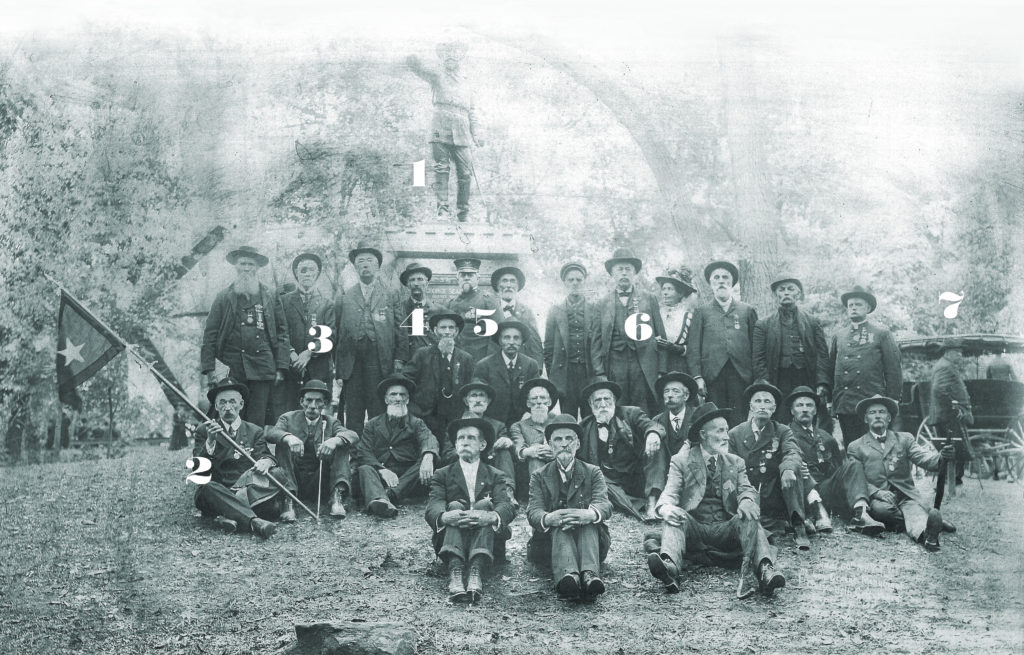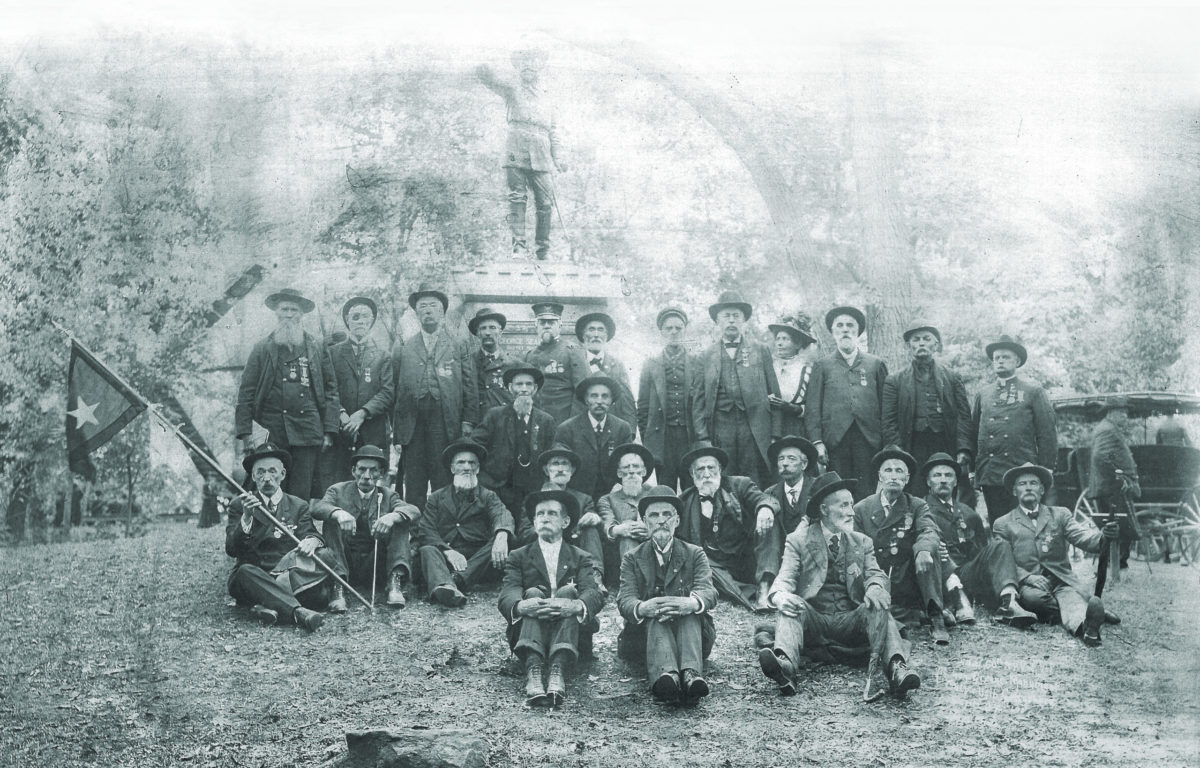During the evening of July 2, 1863, on Culp’s Hill at Gettysburg, Brig. Gen. George Sears Greene’s brigade of the 60th, 78th, 102nd, 149th, and 137th New York regiments, about 1,350 men, hunkered down behind earthworks to hold off three Confederate brigades totaling more than 4,000 men for three long hours. Greene’s brigade had been left behind when the balance of the 12th Corps, five brigades, were ordered to move to reinforce Little Round Top. The ensuing fight that occurred on Culp’s Hill was desperate, lasting from 7 p.m. to 10 p.m. before relief finally arrived. The stout defense by Greene’s men saved the right of the Union “fishhook.”
In this image, a group of 60th New York veterans pose during the September 1907 dedication of the Culp’s Hill monument to General Greene. The regiment, raised in the St. Lawrence River region, anchored Greene’s left flank and numbered about 273 men at Gettysburg, while more than 1,000 men in Brig. Gen. John Jones’ four Virginia regiments rushed their portion of the line. Helped by their earthworks, the steep slope of Culp’s Hill, and their own tenacity, the 60th managed to hold on, incurring 52 casualties, including some of the men in this photo.

1. Greene’s statue atop the monument is posed pointing down his line of earthworks. At Gettysburg, Greene was 62 years old, the oldest commander in the Army of the Potomac. He was nicknamed “Old Pap” by his men.
2. This vet holds the brigade’s pennant bedecked with a white star for the 2nd Division of the 12th Corps, and bordered in blue to represent the 3rd Brigade.
3. William Keenan’s eyepatch tells a tale. He lost an eye during the Culp’s Hill fighting.
4. A Confederate bullet shattered George Grant’s left arm on July 2, leading to its amputation. Another member of the regiment, Edward Sharples, remembered that during the battle each discharge of a 60th musket “lit the woods like day, revealing…Confederates massed below.”
5. Ulysses S. Grant’s son, Fred Grant, attended the dedication.
6. Charles T. Greene served as aide to his father on Culp’s Hill. Charles went to the Western Theater with his father, and lost a leg at the Battle of Ringgold, Ga., on November 27, 1863. His wife, Addie Maude Supple Greene, stands next to him.
7. Is that you, Dan? The slightly blurred figure bears a strong resemblance to Daniel Sickles, the controversial commander of the 3rd Corps at Gettysburg. He frequently attended monument dedications as chair of the New York State Monuments Commission.





